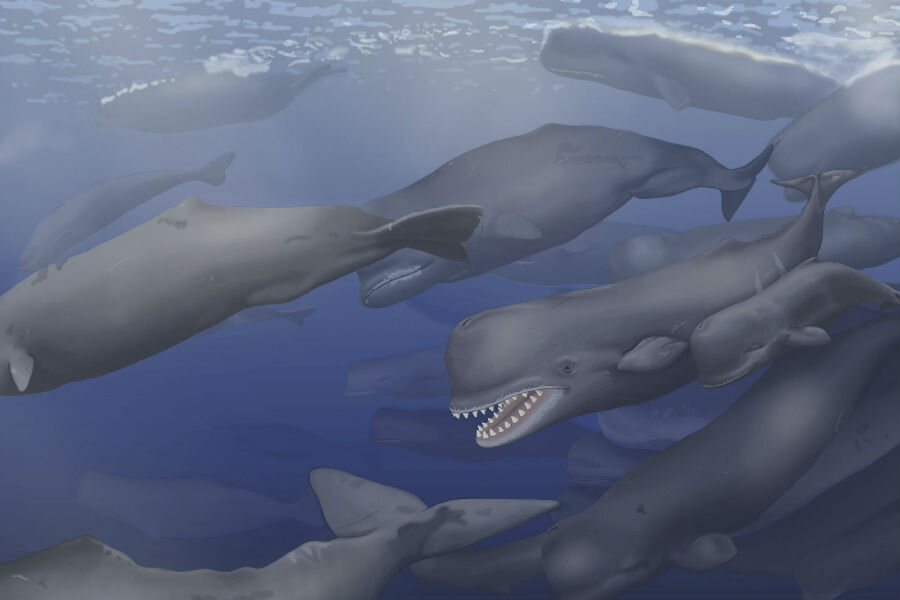Scientists find Moby Dick's ancestor on a museum shelf
Loading...
Moby Dick has gotten a revision. The whale, that is, not the classic novel by Herman Melville.
Sperm whales are big, but their part of the family tree is relatively small, with just three known living species. But their fossil history suggests that the family once contained a rich variety of whales of all shapes and sizes.
Now, scientists can add to this array Albicetus oxymycterus, a sperm whale that lived some 14 million to 16 million years ago.
In a study published on Wednesday in the journal PLOS ONE, Smithsonian researcher Alex Boersma and her coauthor, Smithsonian marine mammal curator Nicholas Pyenson, notes that, when the massive, white-gray rostrum, jaws, and isolated teeth were uncovered near Santa Barbara, Calif in 1925, the specimen was classified as a walrus and put in storage at the Smithsonian Institution in Washinton, DC.
But over the following 90 years, other scientists "noted that the fossil has conical teeth, while walrus tusks are more flattened," Dr. Pyenson tells The Washington Post in an interview.
“They’d mention it in footnotes in papers, but no one did the job of studying it taxonomically and giving it a new name,” he says.
So Pyenson and Ms. Boersma pulled the 300-pound fossil off the shelf. To avoid having to wrestle with the behemoth, which Pyenson says may have discouraged earlier investigations, they scanned the bones and created a 3D model.
What they describe in the study is an ancestor that bears few similarities to the subject of Ahab’s epic hunt.
Melville’s story of the elusive white whale was inspired by the New England author's experience on a whaling ship, as well as two stories, one a kind of folk tale based on the rumored killing of an albino whale in the Pacific in 1839, as well as the true story of the Essex, a whaler that was sunk by a bull sperm whale in the southern Pacific; the ship's survivors were left marooned for 92 days, with some resorting to cannibalism, The Guardian reports.
At about 20 feet long, Albicetus – whose name means "white whale" – would have been about a third of the size of the largest modern-day sperm whales. Its iconic rectangular head was also much smaller, too; those that swim today house the world’s largest brains.
Still, the ancient version was likely ferocious in its own right.
“[P]robably the biggest difference would be this really big, gnarly jaw full of these huge teeth,” Boersma says in an interview with The Guardian. Though the teeth are about the same size as in modern-day sperm whales, whose teeth only line the bottom jaw, so “proportional to the smaller Albicetus,” The Guardian reports, “they were kind of comically huge in both their upper and lower jaws”.
The researchers acknowledge that it’s impossible to identify skin color from a fossil, Boersma calls these fossils’ “ashen white color…kind of unusual for fossils,” she tells The Guardian. “To have a big white sperm whale fossil – it just seemed appropriate.”








